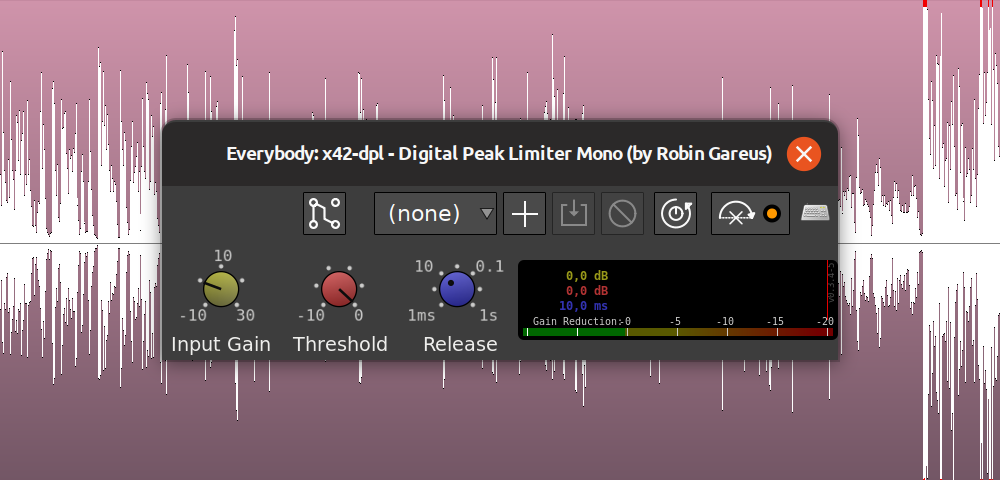Week highlights: Krita team begins working on SAI files support, new releases of StereoPhotoView, Blender Power Sequencer, and Flowblade, even more sculpting awesomeness in Blender.
Graphics
For GIMP, Michael Natterer and Jehan Pages spent the entire week porting plug-ins to new APIs, so not much fancy stuff going on.
One of the most interesting things going on with Krita right now is 3rd party funding to support SAI files via newly developed library called libsai (apparently, made by someone from Epic games). Only loading is likely to happen because of this:
Writing probably isn’t going to be possible… The file format is completely crazy, a kind of virtual file system with encryption keys. The work done at https://gitlab.com/Wunkolo/libsai is amazing.
It looks like this is FreeHand all over again.
Wolthera is currently adding decryption support to make it possible loading actual bitmap data, not just the layer tree.
Other than that, the team is mostly fixing bugs and preparing for the release of Krita 4.2.6 (beta is available, and the team needs your feedback).
Photography
Alexander Mamzikov released a new version of StereoPhotoView application that allows viewing and basic editing of stereoscopic images and videos. New features: variable alignment (scene depth) in the stereoscopy video content, gallery display and navigation when opening a photo from separate sources, automatic rotation when loading JPEG as per Exif orientation tag.
3D and VFX
For even more Blender changes, here’s a new weekly video review:
Blender team is also looking for a UX and web designer. See if you are interested and fit the criteria.
Nathan Letwory released a new version of his .3dm (Rhino) importer for Blender, with preliminary curves support.
Stephen Agyemang, appleseed’s second GSoC student, posted his report on implementation of practical path guiding in the renderer, that he worked on over the summer. This technique allows improving renders where indirect lighting is involved. See here for more details.
Frédéric Devernay cut another release candidate for Natron 2.3.15.
CAD
Yorik van Havre posted his monthly update about the work he and fellow team members did on FreeCAD, mostly in BIM and Arch department.

Some of the highlights:
- BuildingParts now have a built-in, implicit section plane.
- Various TechDraw ArchView and DraftView improvements.
- DXF importing/exporting is now done with correct line color and style.
Even more importantly, the Link branch has been merged to the main development branch and allows FreeCAD to share object data (e.g. geometry) with other objects, inside or outside the file. This is pretty much a prerequisite for assemblies.
See the full report for more info.
Video
The GDquest released Blender Power Sequencer 1.3:
Version 1.4 already in the works, if you missed some of the new features announcements:
Coming in Power Sequencer 1.4: a much nicer trim tool. Inspired by @OliveTeam's edit tool. Supports snapping, and trimming all channels at once.#b3d pic.twitter.com/Dq4flq4sME
— GDQuest (@NathanGDQuest) August 21, 2019
Nathan Lovato is also giving a talk about VSE at Blender Conference in October.
Janne Liljeblad released Flowblade 2.2. Some of the new features are: RotoMask and FileLumaToAlpha filters, LumaToAlpha compositor, and some UI updates for the titler and the keyframe edit tool. See here for more details. And here is a video that demonstrates using the roto mask.
The Pitivi team started merging GSoC code. The marker bar is now part of the master branch in Git.
As for Shotcut, Dan Dennedy introduced multiselection to the timeline (as well as Select All/None actions) and added several new video filters: Blend Mode, Elastic Scale, Threshold, Posterize, Halftone, and Dither.
Audio and music
Will Godfrey released a new version of Yoshimi, a free software synth. Some of the highlights are: extensions to AddSynth voices and modulators, a new AddSynth noise type, extra mute options, a global bank search entry.
Robin Gareus added pYIN support to Ardour for frequency estimation in audio. The change was introduced after looking at what David Healey has been doing with Lua scripts in Ardour:
Robin also added progress notification for Lua scripts execution and introduced support for new LV2 extensions (backgroundColor, foregroundColor, and scaleFactor) that allow a host to inform plugins on host color theme and UI scale factor to play better with non-default themes and on HiDPI displays.
The change requires patching both the host and LV2 plug-ins code. Here is what you get with default Ardour theme in upcoming version 6 and Robin’s limiter plug-in:

And the same with a brighter theme called Blueberry Milk:

Among other noticeable changes in the program, Nikolaus Gullotta of Mixbus fame added sortable Time Span, Length, and Range name columns to exporting dialogs. And Len Ovens continues his work on the foldback bus.

JP Cimalando made the initial release of an LV2 effect called stone-phaser, a phaser similar to the original vintage Small Stone pedal from the 70s.
Tutorials
Nathan Lovato explains how to create a tileset for a game in Krita with file and clone layers:
Xavier Shay explains how to recreate a Juno-60 with VCV Rack.
New Inkscape timelapse from grafikwork, this time on drawing chocolate icong donut:
Art and showcases
Barandanduen posted a new artwork made with GIMP:

New artwork by Ray Waysider, made with Krita:

Fenec fox render by Kanishk, made with Zbrush and Blender:

Felipe Torents did a new lighthearted animation with Blender:
Spring is coming! #b3d #blender3d #eevee #spring #paraguay pic.twitter.com/GxJSj5Cuil
— Felipe Torrents (@FelipeTorrents) August 27, 2019
There’s more Blender goodness on Bart’s weekly review of best artworks.
Patreon subscribers get early access to my posts. If you are feeling generous, you can also make a one-time donation on BuyMeACoffee.

